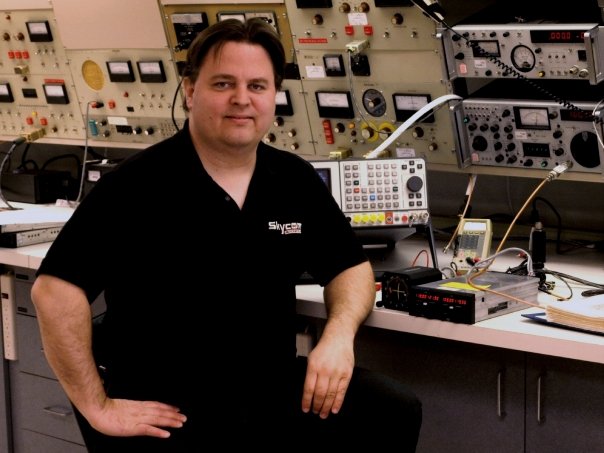A Few Thoughts on USB Device Interference in Aircraft
Jim Karpowitz, Avionics Technician
A few years back I attended an evening concert by a wonderful artist whose music I very much enjoy. That particular night, however, the person sitting next to me insisted on singing along with every song. This individual was enthusiastic but was also tone deaf and monotonic. The skill of the artist was no match for the caterwauling coming from the seat next to me. As a musician myself, the dissonance was at the threshold of pain and the only way I could enjoy the concert was to move to another seat. In other words, I had to get clear of the noise source to receive the desired signal.
This is how your avionics feel in the presence of consumer grade portable devices and power supplies that have a tendency to radiate electromagnetic interference, or EMI. EMI has become a serious concern in a number of industries because of radiated interference from power supplies, lighting systems, computer systems and peripherals and other noise sources creating interference to everything from television and radio broadcast to wireless microphone systems to amateur and commercial communications.
 Avionics are not immune to interference either. In the aircraft environment, the use of portable digital devices has increased greatly over the last few years and these devices can and do generate substantial amounts of interference. I have diagnosed numerous cases of interference and have found that cigarette lighter USB power supplies are some of the greatest offenders, often dropping incredible amounts of interference within the nav and com bands. The result can be anything from intermittent squelch break to serious interference with desired signal reception.
Avionics are not immune to interference either. In the aircraft environment, the use of portable digital devices has increased greatly over the last few years and these devices can and do generate substantial amounts of interference. I have diagnosed numerous cases of interference and have found that cigarette lighter USB power supplies are some of the greatest offenders, often dropping incredible amounts of interference within the nav and com bands. The result can be anything from intermittent squelch break to serious interference with desired signal reception.
Often people will try to address the intermittent squelch break issue by turning up the squelch threshold. It’s the wrong approach, rather like hanging a candle in an outhouse. The first rule of noise mitigation is to deal with the interference at the source. I cannot overstress the importance of addressing the interference itself rather than masking it in the receiver. Often this means investing in devices (USB supplies, for example) that have gone through the process of testing and approval for aircraft use, giving the user some assurance that a) it does not interfere with on-board systems and b) on-board systems won’t interfere with it, to say nothing of testing for safety issues such as overload and fire protection.
We all want to save our dollars where possible, but trying to save money by using untested/unknown devices is penny wise and dollar foolish. Some consumer grade devices may interfere, some don’t. The point is, without some level of testing and certification, it’s a complete crap shoot, and aviation is no place to be rolling the dice.

Jim Karpowitz is an avionics technician in Wisconsin.

